Technological start-ups and companies from all over the world have a good tradition: each time at the beginning of the year, their leaders brag about their achievements at CES, the International Consumer Electronics Show in Las Vegas. Not every pitch and gadget at the event is uniquely successful and fully thought out. Among the latest advances in technology, there are enough devices with an incomprehensible purpose.
More precisely, the few impressive new items CES are accompanied by an army of strange and bizarre gizmos. It is almost like a comet trail, but only in the world of gadgets. It is still difficult to say how completely the "core" of the exhibition of the current year was, but the most bizarre ideas and devices have already managed to prove themselves. We talk about the 10 strangest gadgets CES 2018.
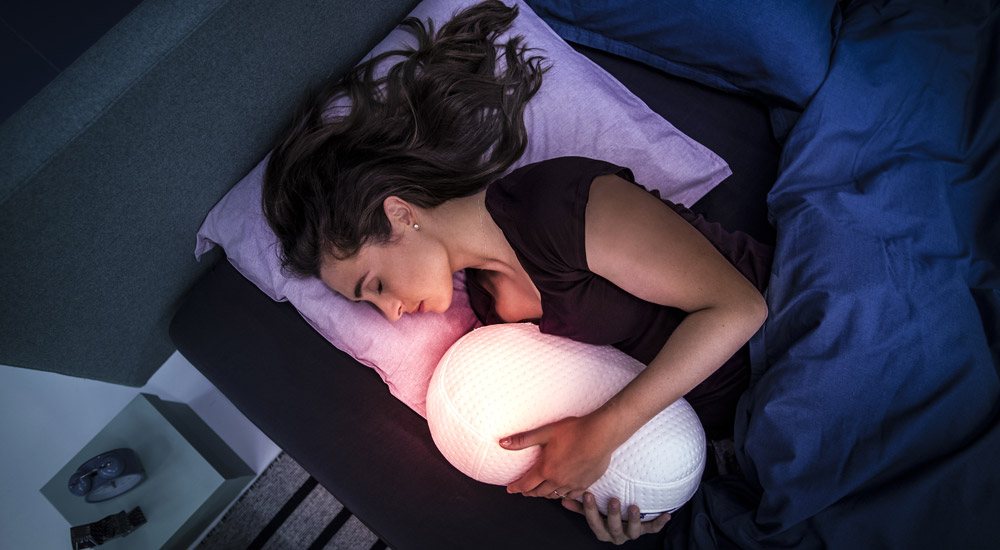
A Dutch startup Somnox brought a robot of the same name to Las Vegas, which, according to its creators, helps fight insomnia and sleep better. The soft shape of the device resembles a large kidney, which is pleasant to hold. Just press the button on the side - and the robot begins to "breathe" rhythmically, compressing and unclenching. It is assumed that the happy owner of Somnox should automatically adjust his breath to these rhythms.
Speakers inside the gadget broadcast different sounds: the sound of raindrops or the sound of a heart, lullabies, white noise and so on. Nothing prevents a user from uploading their favorite black metal album to Somnox, there would be a desire. The robot will turn off playback itself when the person hugging it falls asleep. All these measures should stimulate healthy sleep.
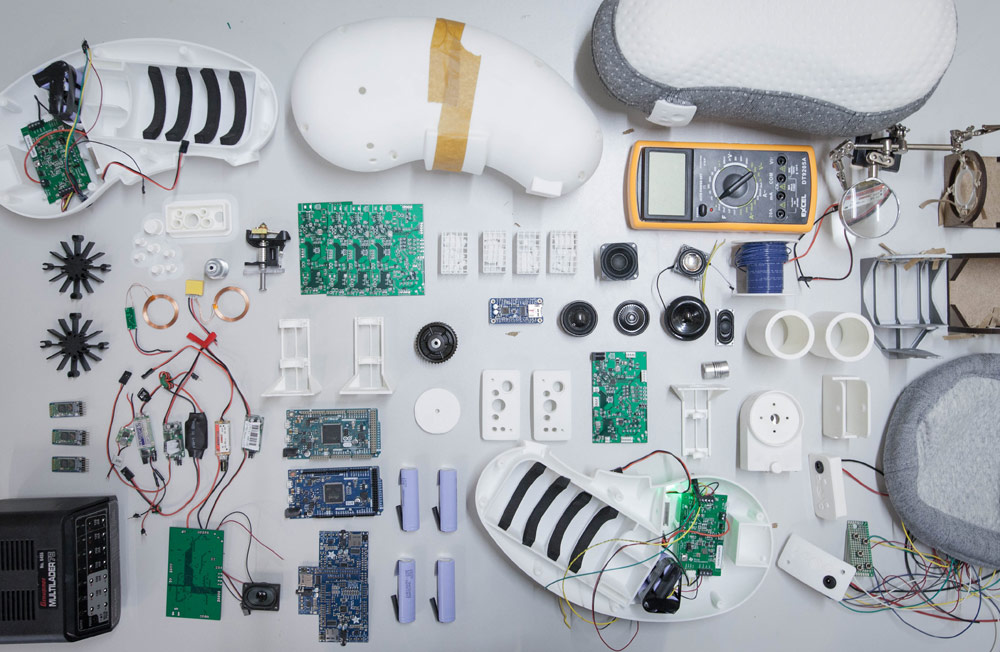
The gadget collected 200,000 euros for Kickstarter, then his campaign was transferred to Indiegogo. The device costs 500 euros, like a good smartphone. In future versions of Somnox, carbon dioxide sensors should appear to track human breathing. So the device will be able to adapt to the person and calm his mind. Critics of the robot rightly point out that it only helps to perform breathing exercises, and in fact it is cheaper and easier to learn how to do them yourself.
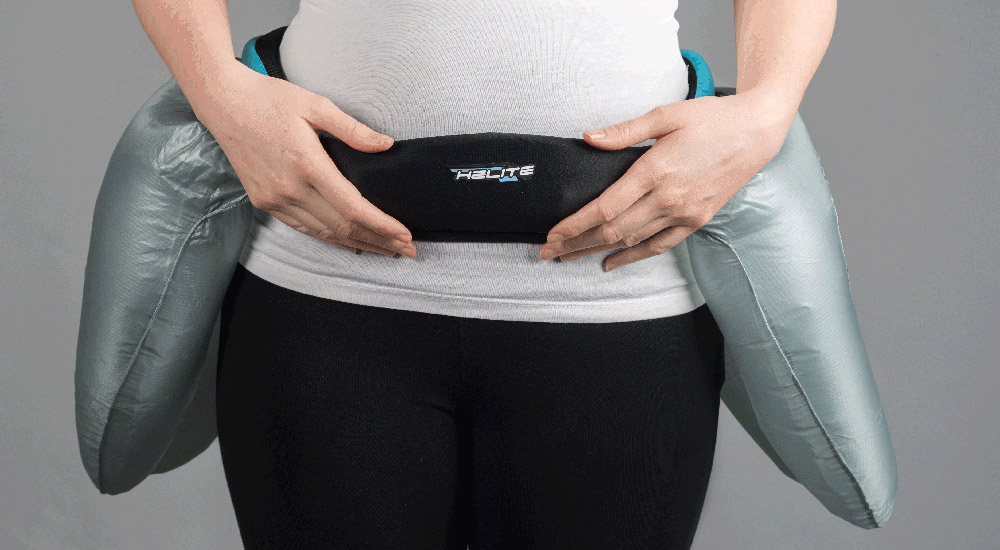
Older people often fall, and in the process of getting serious injuries - most often a hip fracture. The French company Helite offers to deal with the problem by equipping the old people with their own Hip'Air airbags.
The device is a lightweight (weighing 900 grams) belt with a gyroscope and an accelerometer that monitor the position of the human body. The system recognizes the start of a fall within 200 milliseconds, then two volume pads are automatically inflated from the side compartments. Since a typical fall takes 400 milliseconds, the gadget has time to work and prevents injury.
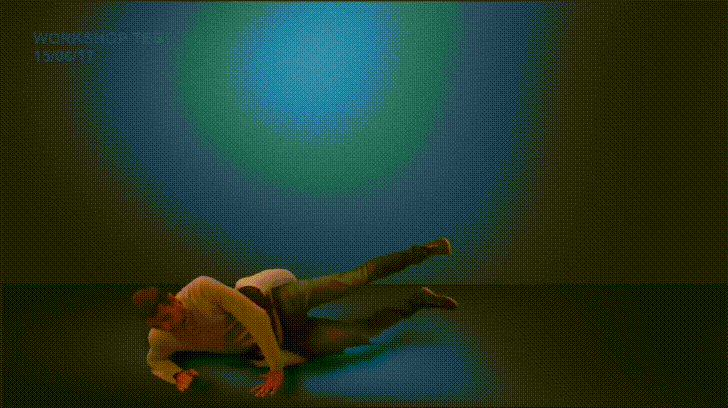
The cost of one Hip'Air belt is $ 790, plus pillows are required to re-inflate with a disposable gas spray for $ 50. Expensive pleasure! Actually devices of this kind already exist: they are ordinary femoral protectors. Their effectiveness raises questions, but the more serious and pressing problem is the persistent unwillingness of old people to use protectors. And since the carrier of the inflated belt acquires a resemblance to the Michelin mascot, one can hardly count on the unequivocal approval of the target audience.

Aromamarketing is a serious business, and French start-up Sniffy treats it accordingly. The company shows at CES a working prototype of the 5D screen of the Sniffy Market, which makes it possible to smell any product sold in the store. Flasks with aromatic compositions are loaded into a rotating drum, then the desired number is selected on the touch screen, and the device delivers the jet directly into the face of the hapless buyer. At the same time, a secret camera is triggered, which collects photographs with reactions to smells for further analysis. Developers plan to engage in software, and hardware, and the compilation of flavors at the request of customers.

Although the idea is curious, it is not so easy to imagine a situation in which the Sniffy device is more efficient than a normal tester. Ease of use is also questionable, because of which the prospects for the project are questionable.
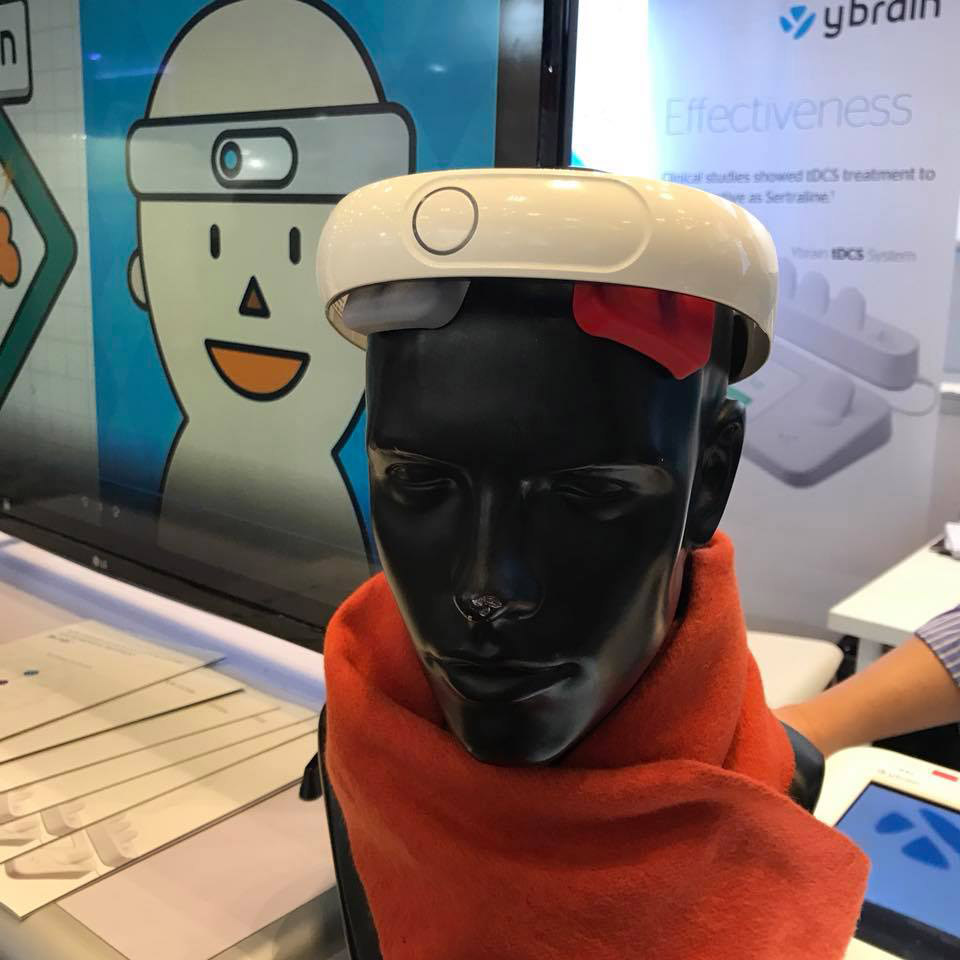
Inventors from the South Korean startup Ybrain believe that electricity can overcome depression. They chose transcranial stimulation with direct current (tDCS) as a method of struggle. The resulting neurostimulator called Mindd stimulates the frontal lobes, since their reduced activity is associated with depression. Now the device is used in 12 hospitals in South Korea, but it was originally conceived as a gadget for home use. The reason is simple: most Koreans suffering from mental disorders do not go to doctors because of social stigma.
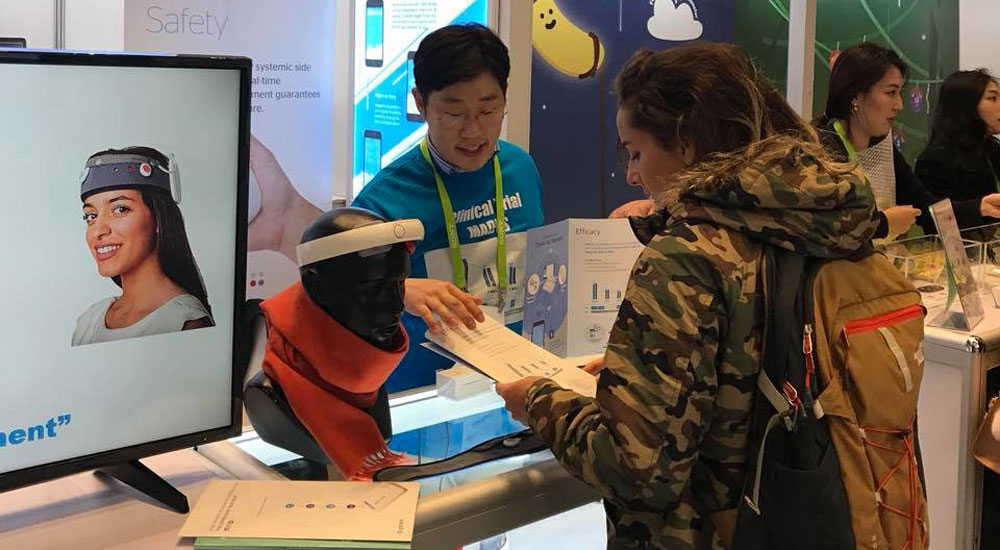
The company claims that its own clinical trials have shown the positive effects of Mindd and the absence of side effects. However, only 20 percent of the electrical impulses from the electrodes in the dressing reach the brain. Moreover, the effectiveness of domestic versions of neurostimulators directly depends on the thickness of a particular skull and the accuracy of placement of the electrodes. However, Ybrain is so confident in its product that it was sent to Harvard for testing (a clinical study for 500 participants could be a record for a new industry). Until scientists give their conclusion, Mindd definitely looks like a trifle and an attempt to make a product on a wave of interest in tDCS.
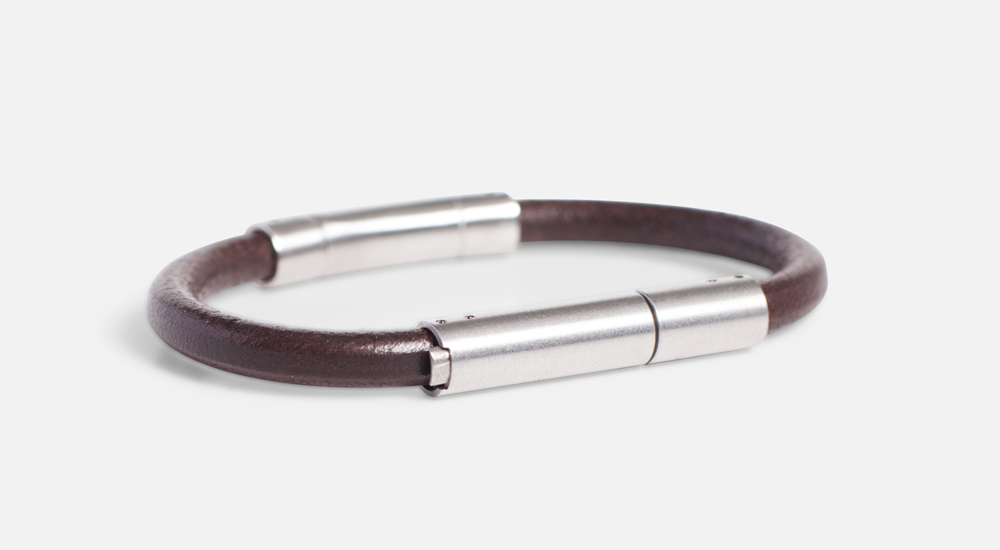
Not every country laws allow you to carry with them the means of self-defense. Fortunately, the Dutch startup Invi came up with an alternative to pepper spray: a “stinky” bracelet. The secret defensive composition is hidden in a capsule inside the bracelet. To use it, you need to unzip the fastener and sharply pull the leather strap, then the capsule will break and release the foul-smelling cloud. Apparently, this is not an irritant, but only an unpleasant aromatic composition with a strong odor, like skunk secretions (yes, the substances from these secretions are lacrimators, but only at high concentrations).

Obviously, the bracelet can not make a demonstration in the middle of the crowd at the Las Vegas Exhibition Center. According to the Dutch, the smell is enough to “shock, demotivate and scare off the attacker” and at the same time cause irreparable damage to his sexual arousal. Mainly the gadget should prevent just sexual abuse, but its effectiveness still raises questions.

It seems that only recently technocrats of Silicon Valley discovered the magical world of diets and soul-saving starvation. Now it is time to join another good tradition and invent their own "magic pill" so that the fat melted without any difficulty. Get to know: Modius Health Neuro Headset. It beats your brain with electricity and makes your body lose weight.
The startup Neurovalens, who invented the new wonder device, is actually British, it was founded by neurobiologist Jason McKeown. However, the noble origin does not add to the idea of believability. The Modius Health headset should stimulate the hypothalamus, with impulses passing through the vestibular nerve of the person who has put it on. The result should be a “reprogrammed” brain, where the “specified” weight of the person is changed - and the subsequent instant weight loss.

According to the testimony of journalists who had the opportunity to try out the device, electrical stimulation of the vestibular apparatus causes only emetic desires. That, of course, contributes to weight loss, as evidenced by the experience of anorexic and bulimic. The device did not undergo any serious clinical trials, but it carried out an extremely successful campaign on Indiegogo, where it collected about $ 2,000,000. The price of one headset is $ 499. Life hacking: two fingers on the root of the tongue will cost you completely free of charge and do not cause a headache.
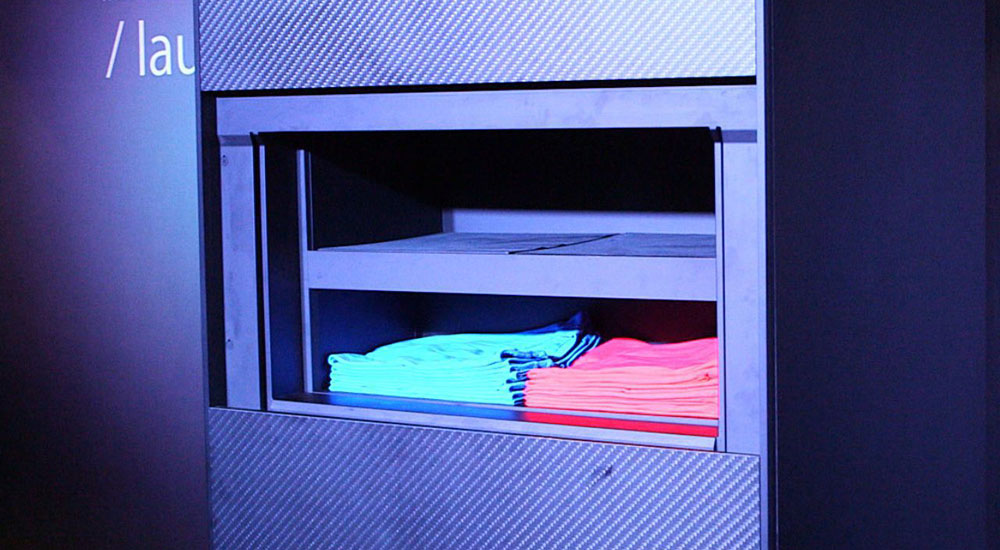
The Laundroid robot is almost a dream come true for lazy teens and adult sluts. The machine neatly folds clothes for them, and also records and catalogs all the things that pass through it. The snapshots of each item are analyzed by a neural network, after which the robot's hands, hidden inside the cabinet, long and methodically fold the clothes. Each individual t-shirt or shirt takes 5–10 minutes (that is, we are talking about working hours for, say, one load of the washing machine). It requires Wi-Fi to work, because the system with "artificial intelligence" is located on a remote server.
A robotic cabinet brought to Las Vegas does not cope with dark tones and hangs from a single black T-shirt. Restrictions and slow work do not interfere with the device costing $ 16,000 - an order of magnitude more expensive than the competing device
Foldimate , for which only $ 980 is asked. However, you can stuff a crumpled T-shirt in Laundroid, and he will straighten it, and things will cling to Foldimate with clothespins. The next stage in the development of technology should definitely be to equip manipulators with a robot vacuum cleaner that would roll on the floor and collect dirty socks. Alas, so far the industry offers free spirit to consumers only expensive, clumsy and very slow solutions.
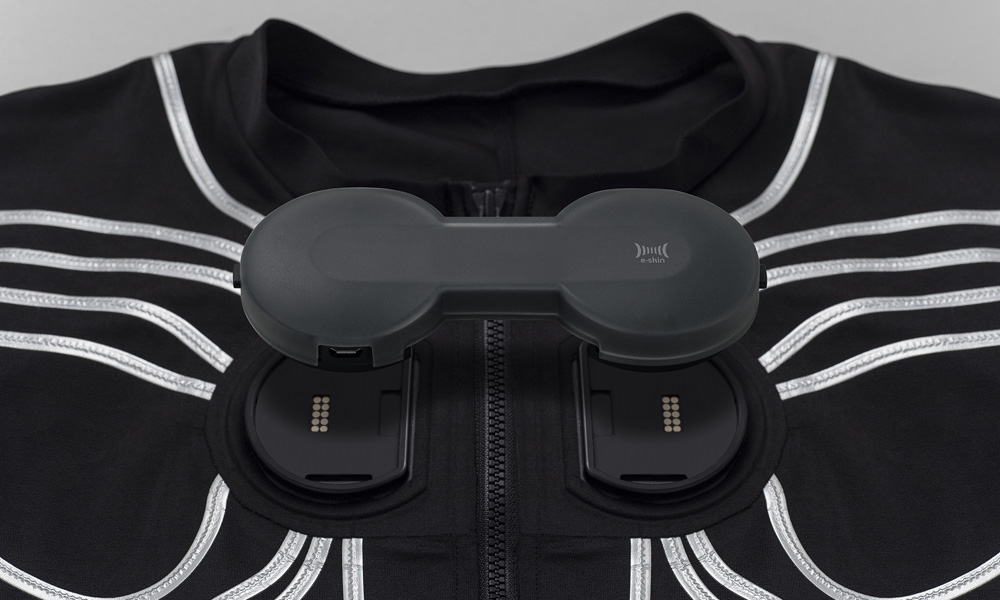
Wearable gadgets are experiencing difficult times, and the inventors are trying to quickly find a replacement for them - for example, smart clothes. Japanese startup Xenoma has been working in this field for a long time, and brought its development, the E-Skin smart shirt / sweatshirt, to CES in 2016 and 2017. CES 2018 was no exception, the Japanese presented several versions of their development at once. In general, E-Skin did not change much in appearance, except that the control module moved from the back (2016) to the chest (2017, 2018). Aesthetics, reminiscent of the cult film "Tron", remained the same: silver strips of sensors twist around the shirt. They send data on the movement of hands and body via Bluetooth to the connected device. There is a delay, but it seems that it has become a little less in a couple of years.
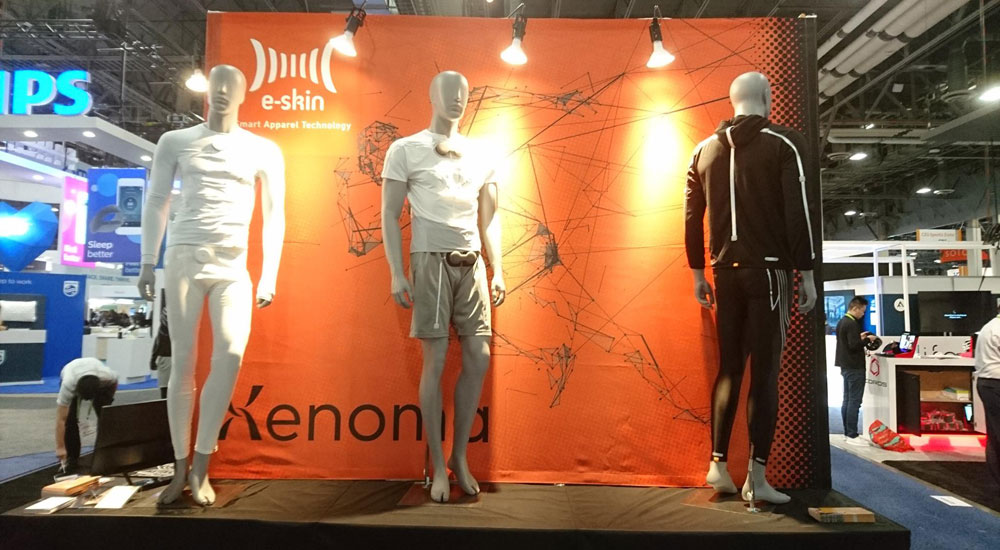
Everyone, including developers, is not clear what to do with E-Skin. It could be used as a controller for video games, but the inglorious demise of Kinect speaks against this option. Virtual reality has too many problems of its own. A smart olympic shirt and smart joggers are more likely to decorate a company's stand than to serve as a concrete offer. The only rational use may be in smart pajamas E-Skin, which allows you to automatically monitor the condition of patients in the hospital. So far, smart shirts cost $ 5,000, but Xenoma hopes to lower the price of the “hospital” E-Skin to $ 100.

Last year, CES was overwhelmed by a wave of cosmetic gadgets: from a clever comb to a clever mirror. Now the trend continues to Neutrogena's SkinScanner skin scanner owned by Johnson & Johnson.
The scanner is an accessory for the "iPhone", which is attached to its top. The gadget is equipped with a humidity sensor and a powerful lens with a 30x magnification. When using SkinScanner makes a strongly approximate "selfie" of the skin area, which are analyzed in the original application Skin360. There is also going to statistics on various indicators like moisture, which is presented in the form of well-known to fans of fitness charts. Moreover, the skin is scored. Finding a "problem" - a wrinkle, or the presence of pores - the program gives a recommendation on the purchase of Neutrogena cosmetic and redirects the user to the store.
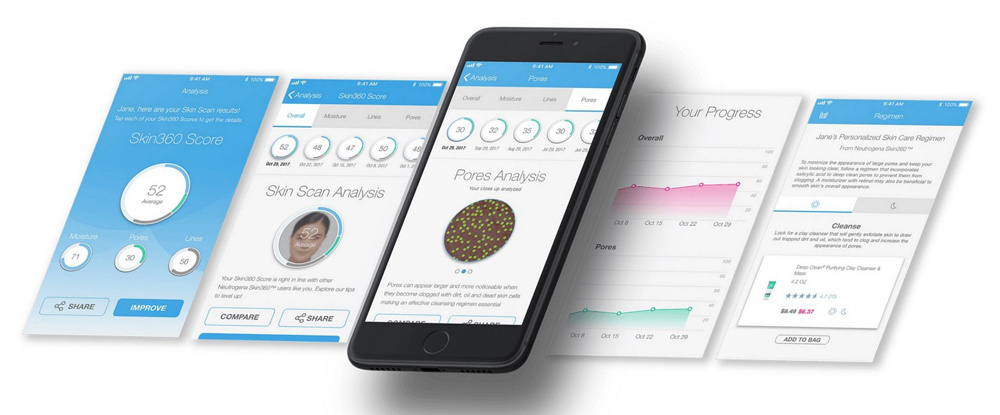
By itself, the idea of a home skin scanner has the right to life, but advertised as "your personal dermatologist 24/7" SkinScanner serves only as a means to sell specific products of a particular brand. Consumers familiar with cosmetics know that even high-quality creams often not only do not suit a particular person, but also cause a colorful allergic reaction. It is unclear how the Neutrogena gadget will solve this situation.
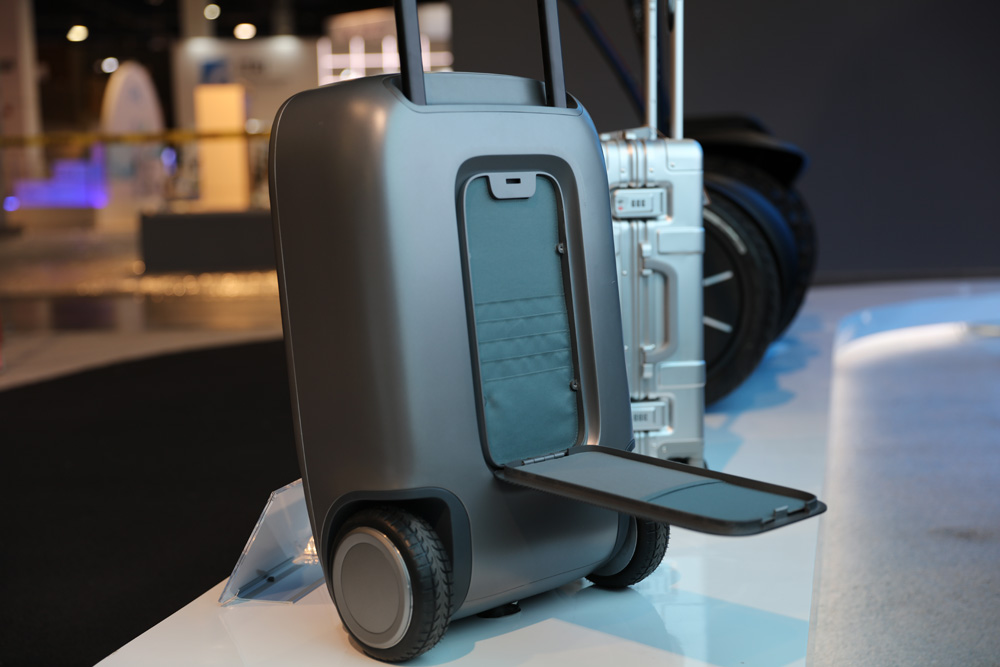
A number of companies presented smart luggage for UAVs at CES 2018. Among them was a suitcase Puppy 1, the development of a Chinese startup 90Fun. Smart luggage is equipped with two large wheels, like a Segway, and balances on the same principle. The gadget follows its owner at a signal to the remote d / y with a button-joystick.
"Puppy" is at the prototype stage, so it is literally blind and does not have a system for preventing collisions with obstacles. Moreover, he feels very uncomfortable on two wheels. Both of these circumstances lead to the fact that the suitcase all the time plops on the floor. The connection with the console is unstable, which is why sometimes Puppy 1 starts to move away from the owner. Fortunately, the gadget moves at a speed of up to 8 km / h, it is easy to catch it in time - but you will not run to land with such slow luggage.
90Fun is “under the wing” of Xiaomi, so it is quite possible that the whims of the suitcase will be fixed and soon the airports of the whole world will flood the hordes of baggage robots.
The future is definitely beautiful, especially its odd features that can be seen on the CES stands. Stay tuned, in the near future we will tell you about the most promising gadgets at CES 2018.

